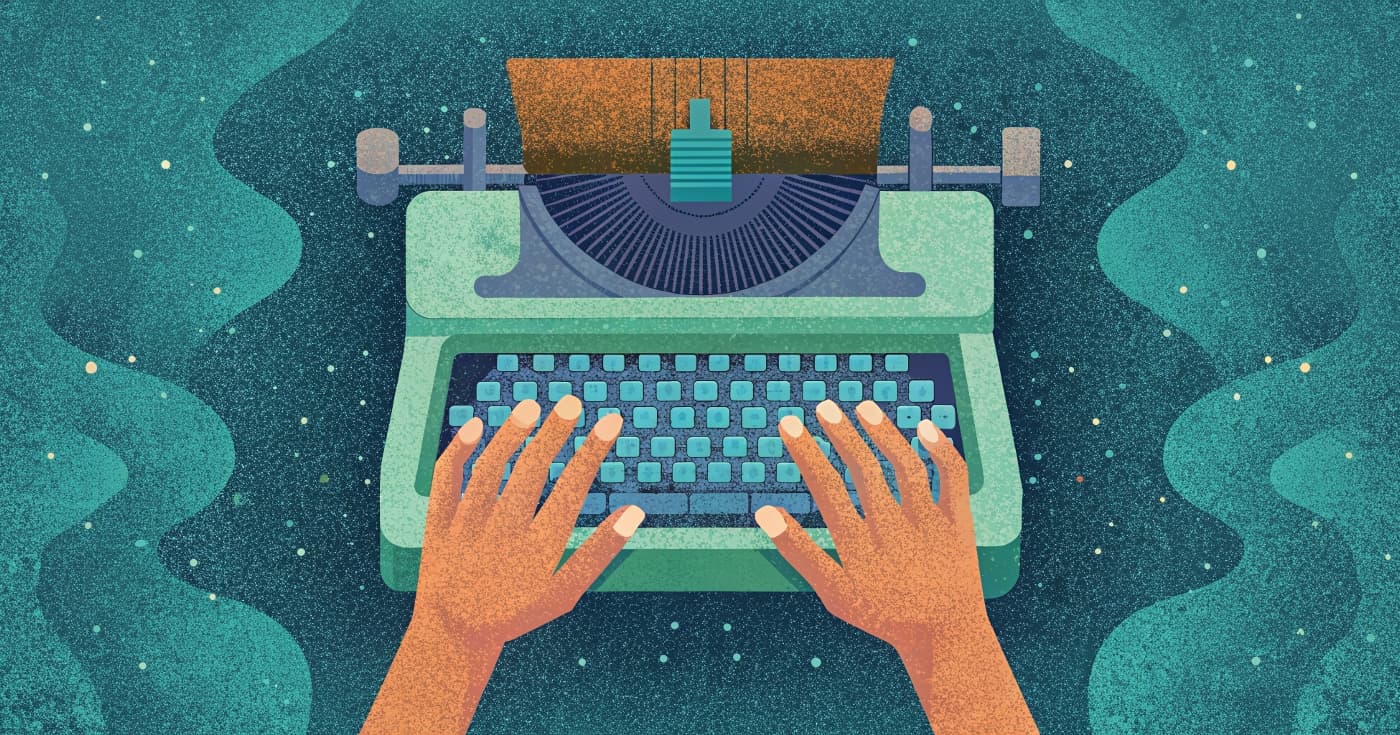Best Writing Strategies for Effective Communication (Including Examples)
We write thousands of words daily. Emails, cover letters, stories, reports. But how many of those words are helpful?

We write thousands of words daily. Emails, cover letters, stories, reports. But how many of those words are helpful?

Today, text content rules the world. Business, academia, and coding all require writing to function. Therefore, excellent writing skills give you an edge in this competitive information age.
Learn timeless writing strategies to improve your skills and become a better communicator.
Communication is key to survival, pushing human interaction forward, whether spoken, written, or indicated via body language. Persuasive communication is an art, and writing is a significant communication component.
This article focuses primarily on written communication and provides you with writing strategies to help hobbyists and professional writers to compose better.
Good writing begins with good reading.
Words originate in thoughts, and reading helps create thoughts. Read a storybook or even a reading strategies book. Read whatever you want. Just read.
Reading familiarizes you with the language and helps make sense of good writing. Reading literature exposes you to the cultivated writing of great writers and sets an example of a good effective essay.
Any topic will do.
Picking a book from any subject and genre and simply going through it with attention will enable you to hone your writing skills.
In short, reading helps:
Recommended books on writing:
Related: 25 Best Books on Writing to Make You a Top Writer
Planning your piece is commonly known as pre-writing—the stage where you sit down and assemble your ideas from scratch, understand objectives, build your arguments, and collect supporting information and examples to produce your theses.
Professional essay writers service representatives call it “outlining” Once you have a topic for your future paper, you research it and take notes on what exactly you’ll include in the introduction, paragraphs, and conclusion of your text. Planning helps you organize thoughts, ensure you won’t miss any argument and supporting evidence while drafting, and write your piece faster.
Once you have a topic in mind, you can dive into research.
Are you thinking to yourself, what should I write?
Don’t worry. Many tools on the web help you find topics to write on, and Blog Ideas Generator is one such fantastic tool.
Jot down points, brainstorm ideas, and scribble them as bubbles on a page or screen. Some great ideas are bound to come up.
When it comes to resources, the internet is your best friend. Anyone can find help on the internet. Some reliable sources include:
Once you have all the needed materials, the next thing on the list is to create an outline. Outlines help set clear objectives around what you want to communicate to your readers.
First, review the ideas you have jotted down and scratch off anything irrelevant. Make a flowchart of how you want to proceed with the writing. Make sure every point works towards and not against your goals.
An outline should contain points for:
Related: What Is a Content Brief and How to Write It
Consider who you’re writing should reach.
Are you writing for middle schoolers or college students? Your reader, especially their reading age, should determine the complexity of your writing.
What is a reading age? “Reading age is the average reading ability expected of a child of that age in full-time education.”
In the UK, the average reading age is just about eight years old.
Therefore, if your writing contains ideas and vocabulary requiring a graduate degree to decipher, your readers may miss out on essential concepts you’re trying to explain.
Writing in clear sentences is the key to improving your readability score.
For example:
Easier to read: ‘Crane machines have long arms.’
Needs attention while reading: ‘Crane apparatuses have elongated arms.’
Using sophisticated but straightforward vocabulary helps maintain clarity. Unless you’re writing something formal or academic, directly address your audience, use powerful verbs to help take action forward, and write personally.
Don’t write for yourself. Write for your reader. Write to them personally, ideally in a way that addresses their idiosyncrasies. While you do not need to water down your material, you also do not want to show your skill. If you are writing for an audience, your intention must be to ensure they comprehend what you are trying to express.
Freewriting is a technique that enables you to scribble your thoughts onto paper without the constraints of structure, grammar, spelling, and meaning. It helps unload your mind freely and follow your impulse without conscious effort. This technique is what literary giant Virginia Woolf would call a “stream of consciousness.”
Freewriting is one of the best writing strategies that help writers push through common problems like writer’s block, writing speed, and creative flow.
Sometimes, writers get stuck for months during creative blocks. During these periods, they cannot produce any writing, disrupting their work and life. If you are a writer going through a similar problem, try freewriting and do it the first thing in the morning.
If you are staring at the blank page for too long, try using a prompt. Take the first thing you see and observe everything about it. Try describing it in terms of texture, color, or shape. You can use any random object and try writing about it. One of these things may lead to an imaginative paragraph or two.
What is structure? The core of your writing, for one.
Writing structure is how you build or design arguments into your writing and is the skeleton of your thesis.
The first sentence and the second sentence are where you establish the central idea of your writing. These are also known as topic sentences and introduce to the reader what your text is about and what they can expect if they keep reading.
Keep your sentences short and straightforward. One rule of thumb is to include two new points per sentence. That way, the sentence will be crisp but not choppy.
Example:
Choosing the right words can impact the reader immensely. There are many words to choose from, but which will best help you to achieve your goal?
Let’s divide words into three small groups – creative, casual, and official.
You can use creative words while writing fiction, expressing feelings and moods, requiring elaboration and complexity.
For example, “A mist of despair settled on the cabin’s tenants.”
Audience: General reader of the text.
Intention: To express the depth of discomfort in the situation.
Casual words are mainly conversational words used in day-to-day exchanges.
For example, I used to hang out there all the time.
Audience: Friend, acquaintance, young.
Intention: To tell nonchalantly.
Official words are used for businesses, legal reports, emails, and more.
For example, “Like 21st-century fascism and religious fundamentalism, neoliberalism is a movement without declared adherents__.” (The Observer)
Audience: Wide range of news consumers.
Intention: To declare with authority.
Notice the bolded words. Each situation, subject, audience, and intention determined the word choice.
Every writing strategy book will tell you to start with a good hook.
One of the most suitable strategies to grab your reader’s attention is tossing an exciting idea at them, which will help build curiosity in their minds.
Here are examples of some of the most refined first lines in the history of the world-
Another writing strategy to enhance your text is to follow specific best practices:
Literary devices are tools writers use to influence the narrative of the text. You’ll be familiar with literary devices if you’re a literature student (or a graduate).
Some literary devices like metaphor, irony, personification, and paradox are common to the masses.
Literary devices help take a text beyond the literal meaning of the observations.
Professional writers use such strategies in writing to make interesting points and leave room for imagination.
Examples of some relevant literary devices are as follows:
Including pictures, videos, and other forms of media in your text will help engage the reader, especially if they are a child.
Media corresponding to your content will make your writing more comprehensive and memorable.
Post-writing, also known as editing, is what every professional writer does to make their draft immaculate. Being a good editor can also tighten your writing because editors spot where the imperfections lie. Editing is not a one-size-fits-all process, but with observation and practice, you can improve and self-edit as needed.
Teaching strategies for writing A-grade writing are summed up here in small groups:
Now you know all the writing strategies that can be used before, during, and after writing.
Whether you’re working on a school assignment, work proposal, or personal blog, these strategies will come in handy.
With time and practice, you can develop your writing style by learning what suits you best.
All the above strategies help teachers and students begin a journey towards drafting quality material.

If you want to drive more targeted traffic to your site, you need to hire content writers. You can do it by following these 5 steps.

All writers need a writing portfolio. Here’s how you can easily develop one and start attracting top clients — no experience and money needed.

There are hundreds of writing tools you can use in your writing business. In this article, you’ll find the 16 free and paid tools any writer can use.